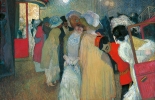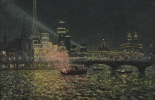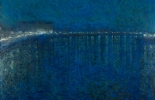Electric Nights
from July 03 to October 29, 2020
A great many of you, throughout the summer and at the start of autumn, came to discover Electric Nights, and to share with us the pleasure felt during this visit. A big thank you to the lenders, to our 34959 visitors and to the press who also unanimously praised the quality of this exhibition which will remain, in all respects, a very special moment in the life of MuMa.
In line with the measures taken by the government to prevent the spread of COVID-19, the MuMa will close from Thursday October 29, 2020 at 6 p.m. up until Tuesday December 1, 2020. Thank you for your understanding.
In line with the measures taken by the government to prevent the spread of COVID-19, the MuMa will close from Thursday October 29, 2020 at 6 p.m. up until Tuesday December 1, 2020. Thank you for your understanding.
During the 19th century - a great century of change - the night-time landscape was radically altered by the advent of artificial lighting. Long veiled in darkness, night gradually began to be lit up by a wide variety of forms of lighting, each creating a different ambience. The interplay of light and shadow, chiaroscuro, back-lighting and the first neon advertising signs offered an array of new visual experiences imbued with a magic and poetry unique to the world of night.
These transformations of night made a deep impression on artists, who reacted variously with curiosity, admiration, fascination and nostalgia. Throughout Europe, night-time scenes became a favourite subject with painters, printmakers and photographers - the most open to expressions of modernity. MuMa’s exhibition «Electric Nights» is the first to explore artists’ perceptions of artificial lighting in the urban setting between the 1850s and the eve of the First World War.
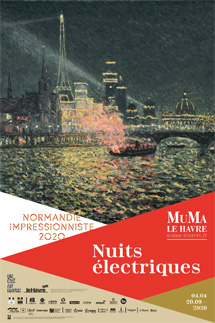
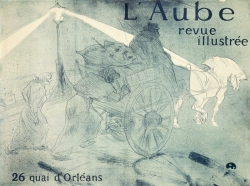
Henri de TOULOUSE-LAUTREC (1864-1901), L'Aube, revue illustrée, 26 quai d'Orléans, 1896, lithography in two colors. National Library of France, Department of Prints and Photography. © Gallica.bnf.fr / Bibliothèque nationale de France
The arrival of street lighting greatly altered the appearance of town centres. The unfamiliar shapes of street lamps, gas jets and globe lights began to be seen in city streets. Artists were highly sensitive to the way the city was changing. They began by incorporating the new designs into their compositions and went on to give them pride of place. Charles Marville’s first series of photographs of street lamps reveals a dazzling variety of shapes. Street lamps became a symbol of modernity and an emblem of the «City of Light».
A patchwork of light and dark
Despite the advent of artificial lighting, night-time atmospheres varied considerably. Some places remained in darkness. Paris’ brilliantly-lit quarters had their shadowy counterpoint in the working-class neighbourhoods on the outskirts of the city, where street lighting was scarcer, uneven and patchy. According to their differing sensibilities, some artists celebrated the brilliance of Paris’ shops and night-time entertainments, while others endeavoured to convey the darkness of the slums.
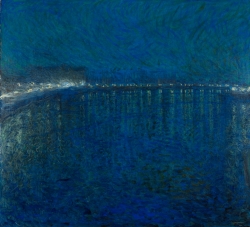
Eugène JANSSON (1862-1915), Nocturne, 1900, oil on canvas, 136 x 151 cm. Gothenburg Museum of Art, Sweden. © Hossein Sehatlou - Göteborgs konstmuseum - 2015 / GKM 0315
Artists for whom light was a central preoccupation were bound to be intrigued by the scope for visual experiments offered by the city at night. Street lighting, be it gas or electric, warm or cold, blinding or soft, still or moving, varied and altered the scene it lit up. The City of Light was far more complex than it appeared at first sight: dark and brightly-lit streets co-existed side by side. Presently, night took on new colours with the first neon advertising signs.
Nocturnal reveries
Not all artists were fascinated and enthused by the way night was being transformed. Some found it disturbing that natural darkness was gradually being banished by increasing prevalent electric lights. The Symbolists responded by inventing an imaginary city of darkness and silence, in which night once again became a space for reverie.
Night-time photographs
At the end of the 19th century and the beginning of the 20th century, photography and later cinema offered a new way of depicting night. Artificial light allowed photographers to capture nightlife by playing on contrasts in a way that was totally new, and electricity provided the first cinematographers with a unique tool for developing filming techniques. Even so, to film night-time scenes, they used the subterfuge of day for night.
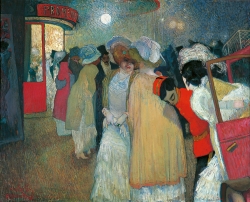
Piet VAN DER HEM (1885-1961), Moulin rouge, vers 1908-1909, oil on canvas, 81 x 100 cm. Private collection, courtesy Mark Smit Kunsthandel, Netherlands. © All rights reserved / courtesy Mark Smit Kunsthandel, Pays-Bas
By the eve of the First World War, electric street lighting was ubiquitous, although gas was still being used for street lighting as late as the period between the wars. The avant-garde artists’ fascination with all expressions of modern life led them to stare head-on at light, dazzling themselves in the attempt to capture pure energy and producing artworks that deconstruct, fragmenting into an abstract, prism-like interplay of colours.
Le Havre, an apt choice of venue
In several respects, the seaport city of Le Havre played a pioneering role in the history of street lighting. Electric arc lighting was installed in the lighthouses at La Hève in 1863, making them among the first in the world to be lit by electricity. Le Havre was one of the first cities to opt for electricity over gas, granting a concession to supply electricity to its network to the Société Havraise d’Énergie Électrique in 1889. It also provided the setting for one of the earliest of the very few Impressionist depictions of night - Claude Monet’s 1872 painting Le Port du Havre, effet de nuit (The Port of Le Havre, Night Effect). The exhibition offers a rare opportunity to view this picture, which is now in a private collection.
Over the last twenty years, MuMa has explored the ways in which artists incorporate transformations of their surroundings and scientific discoveries into their aesthetic innovations and experiments, taking major works from its collections as starting-points. «Electric Nights» follows on from exhibitions such as «Vagues. Autour des paysages de mer de Gustave Courbet» (Waves - Gustave Courbet’s seascapes”, 2004), “Sur les quais. Ports, docks et dockers” (On the docks - Ports, docks and dockers”, 2008), “Nuages…là-bas les merveilleux nuages. Autour des études de ciel d’Eugène Boudin. Hommages et digressions” (Clouds... Over there, the wonderful clouds. Tributes to and digressions from Eugène Boudin’s sky studies, 2009), and more recently “Né(e)s de l’écume et des rêves” (Ocean Imaginings”, 2018).
Curator :
Curated by Annette Haudiquet, the director of MuMa,
The exhibition brings together a group of oil and watercolour paintings, prints, photographs and films that have never previously been seen in conjunction with each other, loaned by major French and foreign collections both public and private including the Musée d’Orsay, the Bibliothèque nationale de France, the Centre Georges Pompidou, the Cinémathèque française, the Musée des Beaux-Arts de Reims, the Bemberg Foundation in Toulouse, Tate, the Victoria & Albert Museum, the Thyssen-Bornemisza National Museum, the Petit Palais de Genève, the Kröller-Müller Museum in Otterlo, the National Museum in Kraków and Göteborgs konstmuseum.
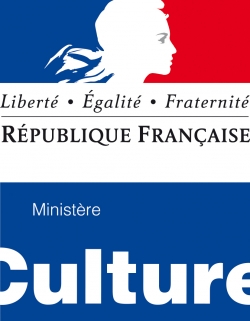
The exhibition "Electric Nights" is recognized as being of national interest by the French Ministry of Culture (Museums of France Department, Directorate General of Heritage) and as such has been granted exceptional funding by the State.
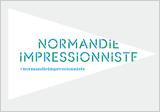
Exhibition is organized as part of the Normandie Impressionniste 2020.
Exhibition produced with the exceptional support of :
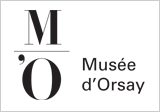


The MuMa particularly thanks the patrons who contributed to this exhibition :




F.P.H
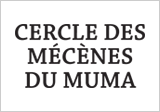
Partner :

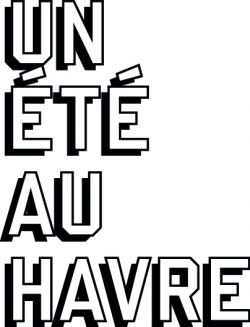
This exhibition is part of the programming of Un Eté Au Havre 2020, a cultural summer season under the artistic direction of Jean Blaise and coordinated by the GIP Un Eté Au Havre.
MORE +
Publications
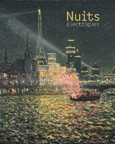
Exhibition catalogue
MuMa - André Malraux Museum of Modern Art Le Havre, 3 April–20 September 2020
Authors: Hollis Clayson, Michaël Debris, Christophe Duvivier, Michel Frizot, Itzhak Goldberg, Annette Haudiquet, Dominique Kalifa, Laurent Mannoni, Françoise Reynaud, Dominique Rouet, Philippe Saunier, Valérie Sueur-Hermel, Agnès Tartié.
Editing : Published by Octopus/MuMa Le Havre, 300 pages - 200 illustrations - 22.5 x 28 cm - Hard cover
ISBN : 978-2-900314-20-3


